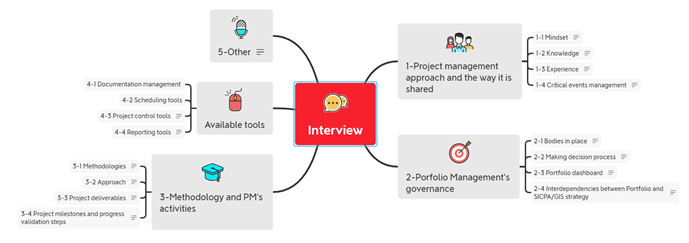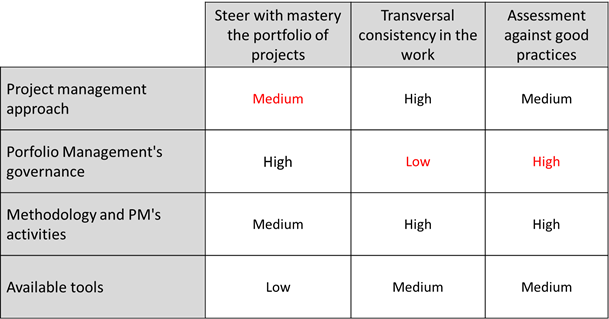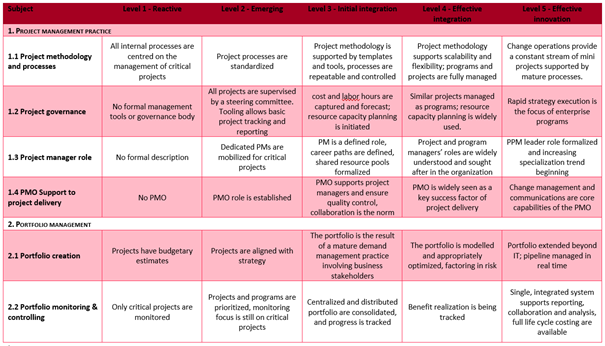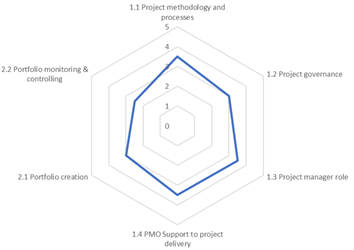
Prepare
Carry out maturity audits, diagnostics, master plans and roadmaps.

Organize
Improve the operational governance processes of your programs, your projects, your operations and of your PMO.

Steer
Call upon our pool of experienced consultants to steer your projects or your operations.

Catalyze
Connect strategy to teams, increasing buy-in and reducing trade-offs.

Assess
Assess the skills of your teams to support their development.

Empower
Support change in organisations or individuals, within the IT department and beyond.

Recruit
Benefit from our exclusive range of senior profiles to recruit your Operations or Project Managers.

Train & Coach
Enable teams and individuals in charge of your commitments to continuously grow and evolve.

Equip
Deploy tools and processes to steer Projects, Operations, Contracts and your Portfolio.

Run
Run contracts, services agreements, SLAs and units of work/activity.
10 years
Programs, Projects or Operations
among MNC's or large accounts' IT organisations
180
experienced consultants
dedicated to operations management
250+
templates and frameworks
to reuse or adapt in your contexts
150+
success stories to illustrate
the value of our services
6
locations to address
your international issues
800+
candidates interviews and
assessements per year
300+
professionals available
through our network
What is the purpose of assessing the maturity of your PMO ?
What do we mean by PMO?
By PMO we mean the team, department, or service that takes charge of, supports, or controls a number of processes related to the management of a project, program, or program portfolio. You can learn more details on the essence of PMO here. If you are also wondering what is the added value of creating or having a PMO, here is an article on the subject. Indeed this question of added value is never far away when we talk about auditing a PMO and more particularly about maturity audit.
The opportunity to measure the maturity of one's PMO department, service or team can be motivated by the desire to respond to some suffering in the exercise of project, program and portfolio management processes that reflect on the impact of the PMO, its role, its responsibilities and its added value. The need may also be associated with a desire to confront one's own processes with the most up-to-date literature on the subject or with the best that is being done on the subject in other contexts.
However, the underlying question is always whether the practices of its PMO team or service are the most relevant for ensuring, controlling or supporting the delivery of the strategic issues of the organization's projects, programs or project portfolio.
To support an organization in detecting and implementing the most relevant answers to its questions on the subject, we propose the following approach. Generally speaking, the audit consists of 4 phases:
- The definition of the objectives and requirements of the mandating organization, vis-à-vis the PMO service/department, its current and future role, its strengths and its pains. This step is usually carried out with the members of the organization's management concerned by the PMO's activity. It consists of :
- Interviewing management, clarifying the scope of the audit and expressing the organization's objectives in relation to its PMO,
- Identifying future interviewees for the next phase,
- Plan the following phases and more precisely identify the issues around the current fiscal year,
- Define the methodologies and referentials, used, known, desired by the organization.
In other words, it is a matter of translating the expected level of maturity and its meaning for the organization into concrete terms. At the end of this phase, we have a maturity scale that is understood by the client and its management, who have appropriated it.
- The investigation phase includes interviews, literature reviews about the processes, deliverables, organization, etc. This step takes place by involving the members of the PMO service and its direct or indirect clients, such as project managers, program, business analyst, managers of resources used by projects, some members of the management,… It should gather enough facts to be analyzed for the next phase. These facts are proof that the requirements are met or not.
- The analysis phase consists in establishing the list of risks and opportunities weighing on the PMO service in its current state, based on the facts gathered in the previous phase . Risks are categorized, assessed (impact*probability = criticality) and prioritized with regard to the organization’s expectations of its PMO service and the threat they pose to the organization’s objectives.
- The creation of an action plan and a roadmap is based on the risk analysis to which it provides, risk by risk, mitigation options, planned over time in order to improve maturity of the audited PMO.
This approach is based on the fact that the notion of PMO maturity only makes sense in relation to the needs and objectives of the organization. The purpose of the audit through the establishment of a road map is to deliver to the PMO's stakeholders a strategic message on its added value, its role and its responsibilities in the implementation of the organization's vision.
In the concrete case of a previous audit for the IT PMO (existing for 5 years) of an industrial company, d²X intervened according to the phasing described above. Over a 3 month assignement (15 man-days), it was possible to carry out the exercise successfully. About ten people were interviewed: CIOs, project managers, infrastructure resource managers and business analysts. This made it possible to set up an action plan to meet the challenges of the evolution of the PMO within the framework of a change of PPM tool.
Feedback and Tips :
- The first step is to ascertain the stakes for client, the PMO and its management to ensure that the audit is the right vector and will meet their objectives.
- The time dedicated to the requirements definition phase with the PMO management is essential to allow the scope and depth of the investigation to be specified and to build a questionnaire frame for the interviews.

- Highlighting the contribution of each audit theme to the requirements of the PMO is an effective way to ensure that the client takes ownership of the issues of the various audit themes.

- Equally important is the client's adherence to a maturity scale, which must be fully understood and validated.

- Spending time on the analysis phase allows to propose an action plan and a roadmap that will prove timely and relevant.
- The participative approach and co-construction are key factors of success, especially during the analysis phase, definition and categorization of risks.

and the creation of the action plan.

The arrangement of three consultants to perform the audit during this service made it possible to carry out all the interviews and to enrich the analysis with several points of view.
- Finally, during this service it was possible to validate an action plan for an organization that has a very mature PMO.

In summary, the exercise is of major importance for any PMO service that has been in existence for several years, because the audit is a means of responding to the context of permanent process change that every organization is continually facing. The (regular) audit allows the organization to take a step back from itself. This step back, dear to continuous improvement, is an essential element of a "flexible" and adaptable organization. It guarantees the efficient adequacy of the implementation of the organization's strategy and the functioning of its PMO.
Sources for this article :
- Donna Fitzgerald & Lars Mieritz, (2014). ITScore Overview for Program and Portfolio Management. Gartner.
- Hobbs, B., & Aubry, M. (2010). The project management office (PMO): A quest for understanding. Newtown Square, PA: Project Management Institute.
- Project Management Body of Knowledge (Project Management Institute, 2017)
Thank you to Guilhem RICHARD, Julien BONTEMPELLI and François-Pierre LEMER for their tips.
